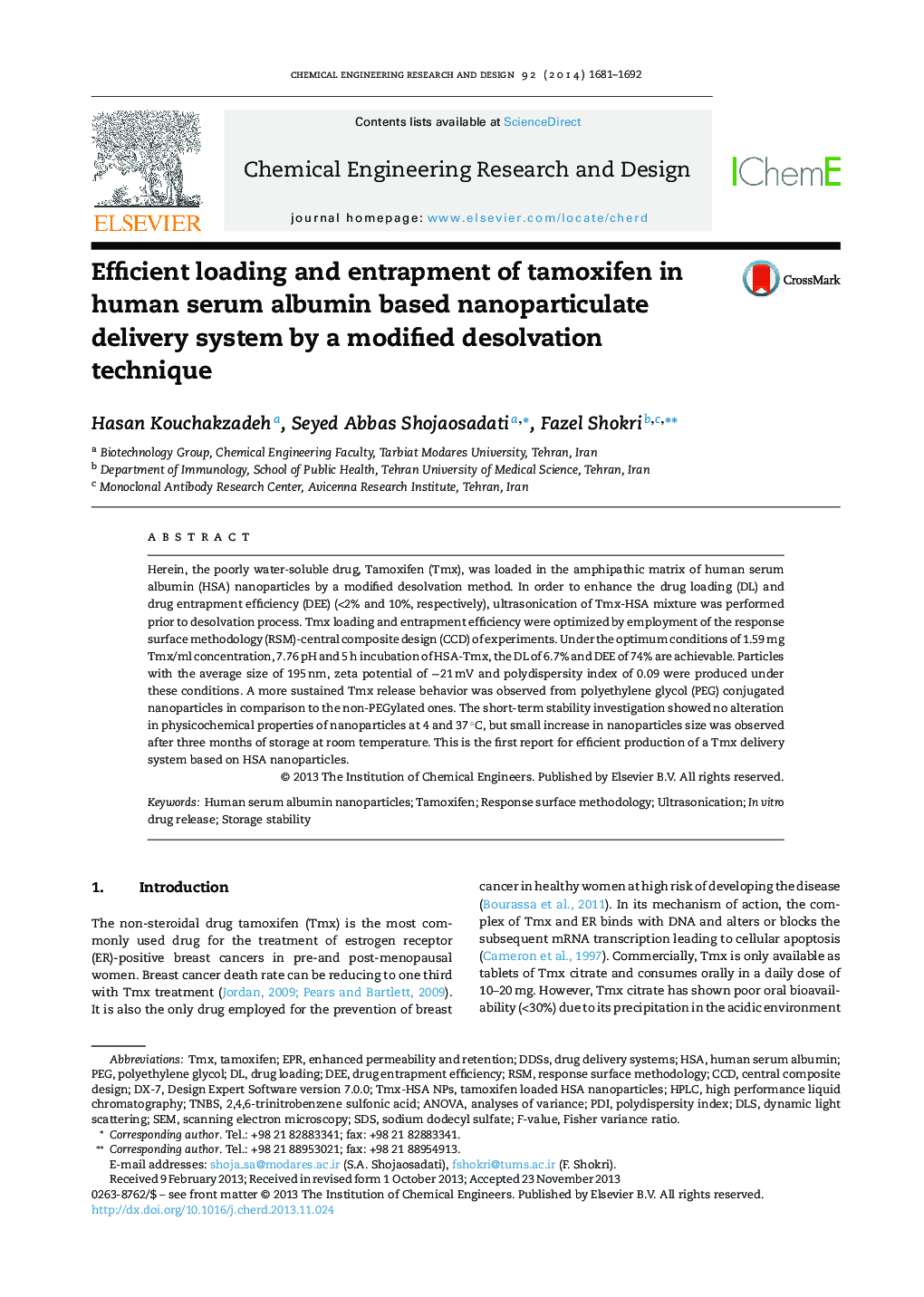| Article ID | Journal | Published Year | Pages | File Type |
|---|---|---|---|---|
| 621030 | Chemical Engineering Research and Design | 2014 | 12 Pages |
•Tamoxifen-human serum albumin nanoparticles produced by a modified desolvation.•Production process was optimized using response surface methodology.•Loading and entrapment efficiency increased 3- and 7-folds, respectively.•More sustained tamoxifen release was observed from modified nanoparticles.•Tamoxifen loaded nanoparticles were stable during three months of storage.
Herein, the poorly water-soluble drug, Tamoxifen (Tmx), was loaded in the amphipathic matrix of human serum albumin (HSA) nanoparticles by a modified desolvation method. In order to enhance the drug loading (DL) and drug entrapment efficiency (DEE) (<2% and 10%, respectively), ultrasonication of Tmx-HSA mixture was performed prior to desolvation process. Tmx loading and entrapment efficiency were optimized by employment of the response surface methodology (RSM)-central composite design (CCD) of experiments. Under the optimum conditions of 1.59 mg Tmx/ml concentration, 7.76 pH and 5 h incubation of HSA-Tmx, the DL of 6.7% and DEE of 74% are achievable. Particles with the average size of 195 nm, zeta potential of −21 mV and polydispersity index of 0.09 were produced under these conditions. A more sustained Tmx release behavior was observed from polyethylene glycol (PEG) conjugated nanoparticles in comparison to the non-PEGylated ones. The short-term stability investigation showed no alteration in physicochemical properties of nanoparticles at 4 and 37 °C, but small increase in nanoparticles size was observed after three months of storage at room temperature. This is the first report for efficient production of a Tmx delivery system based on HSA nanoparticles.
